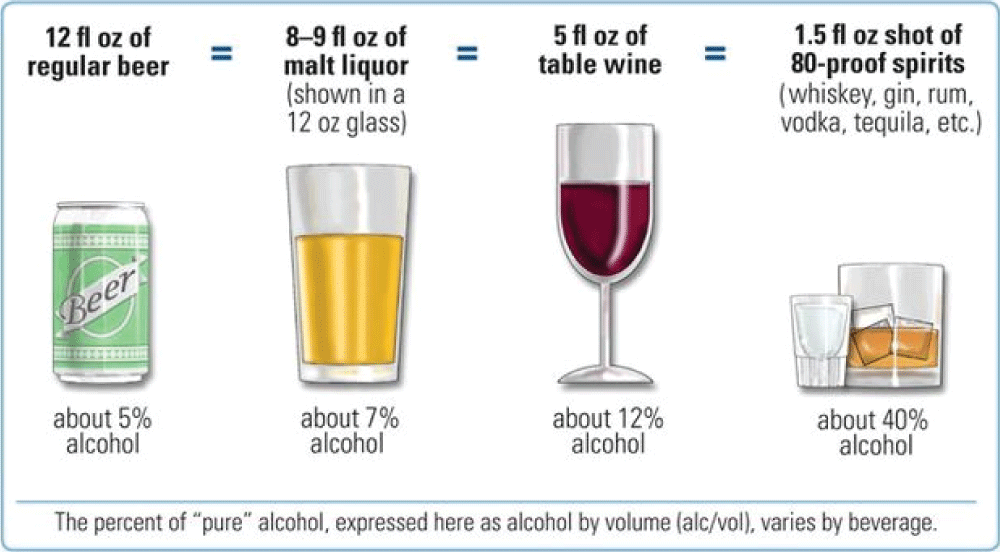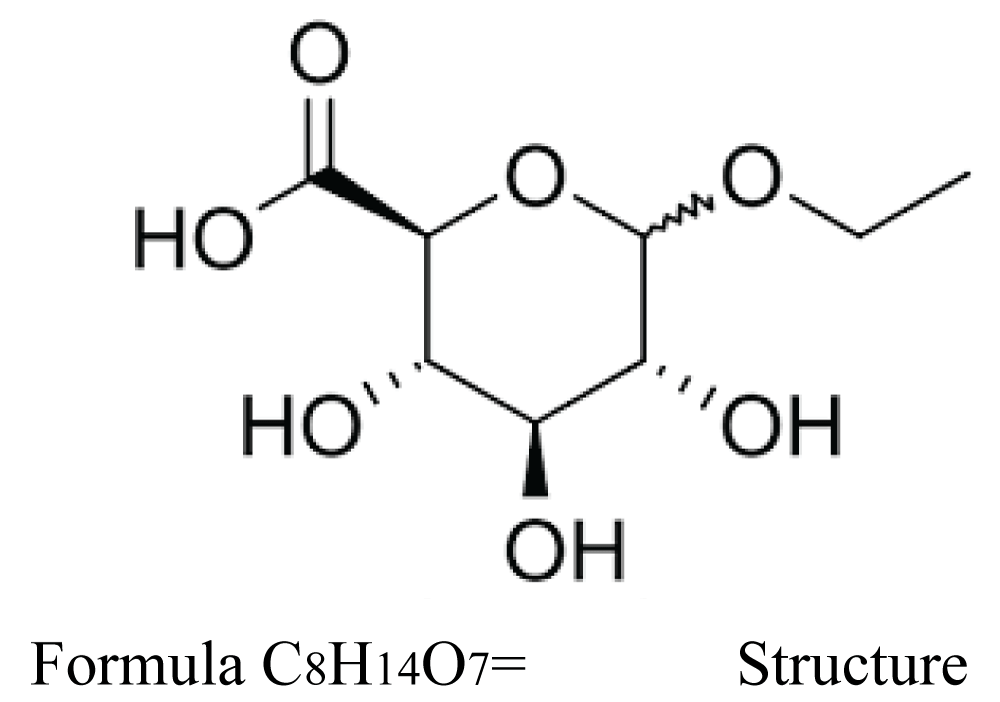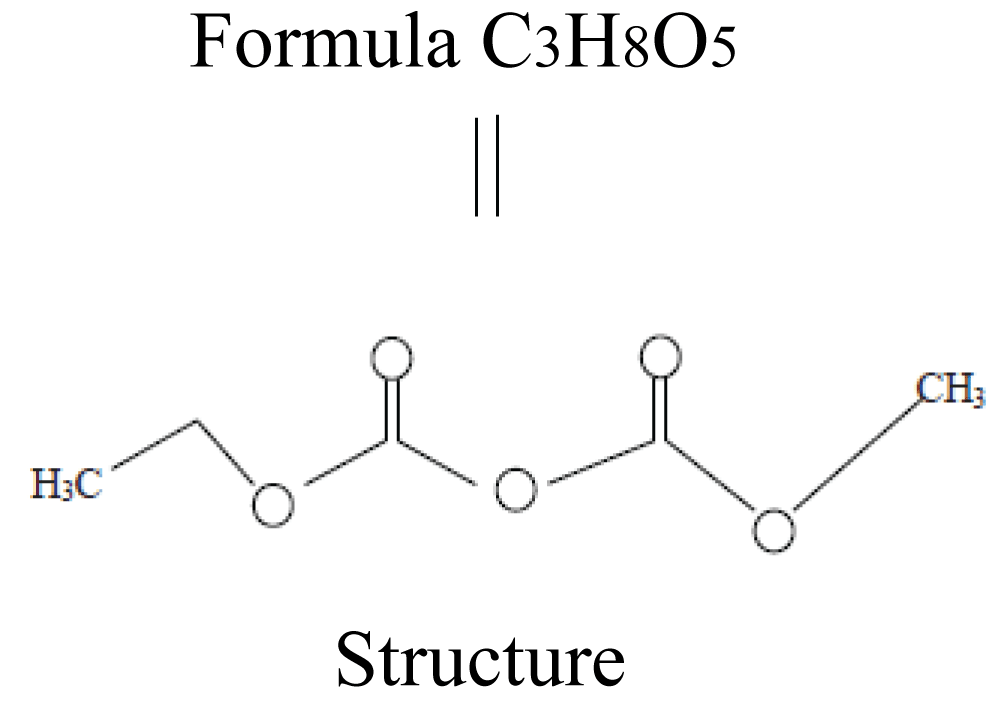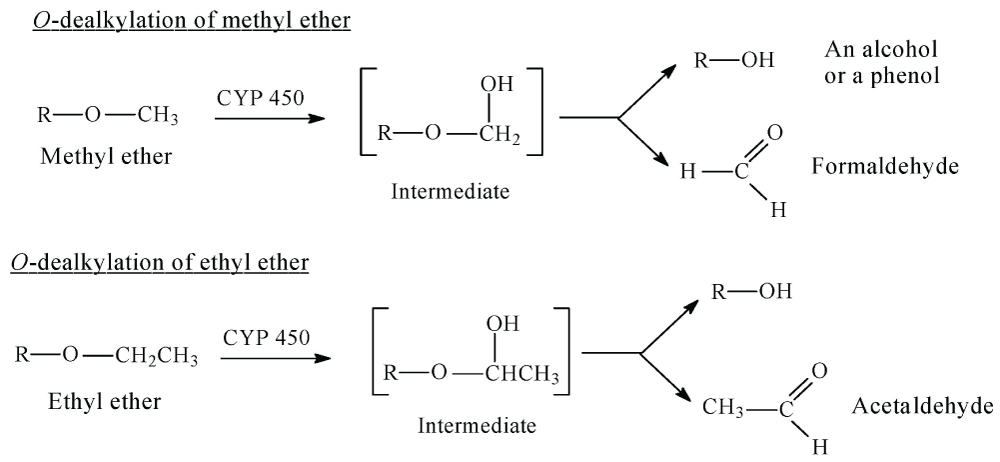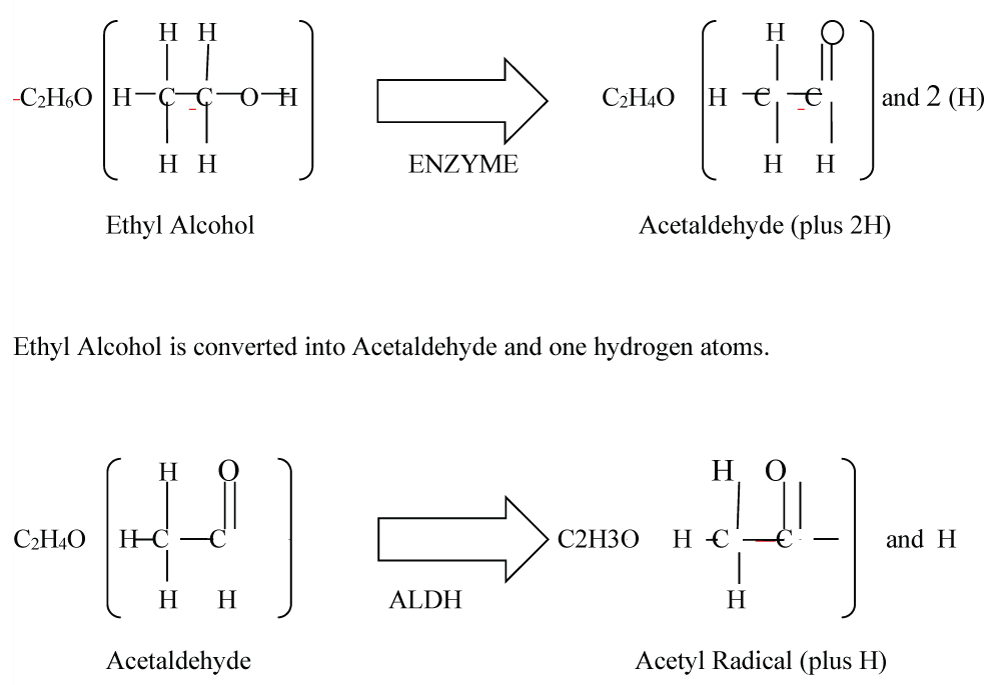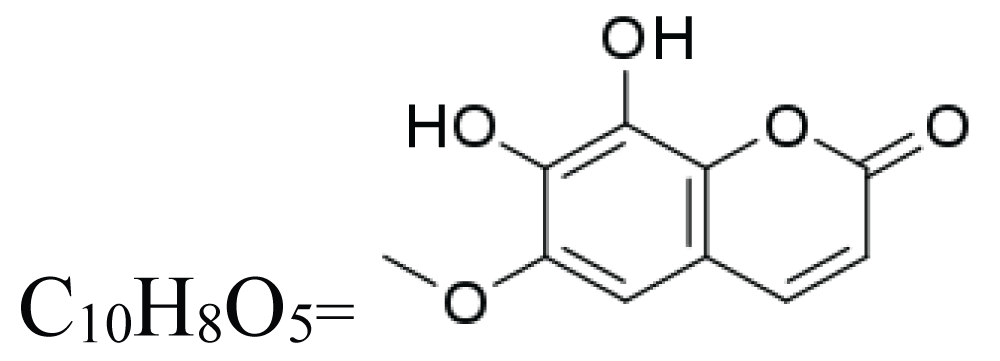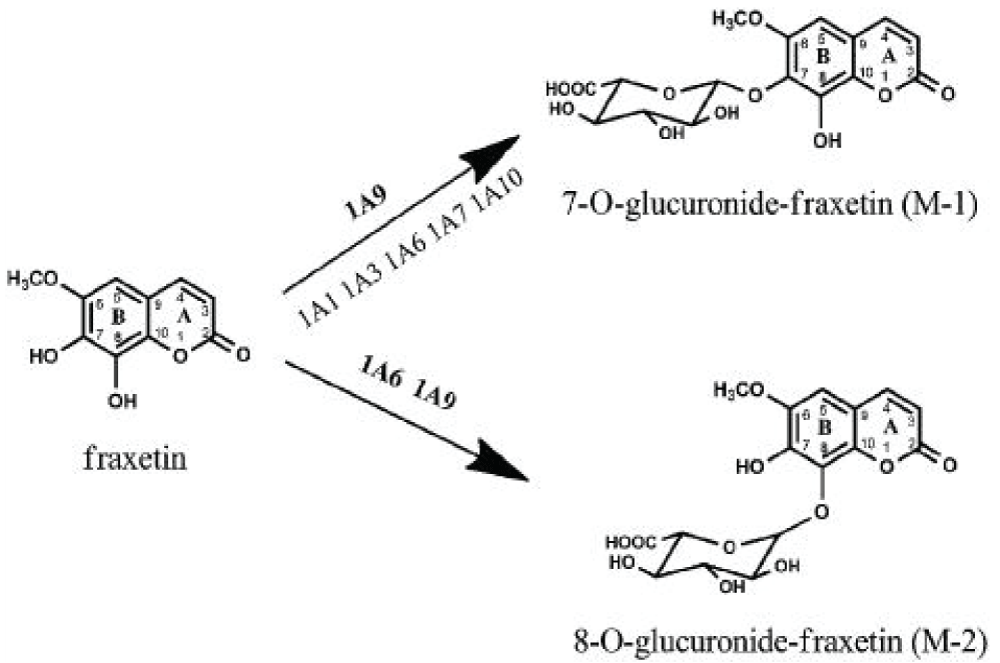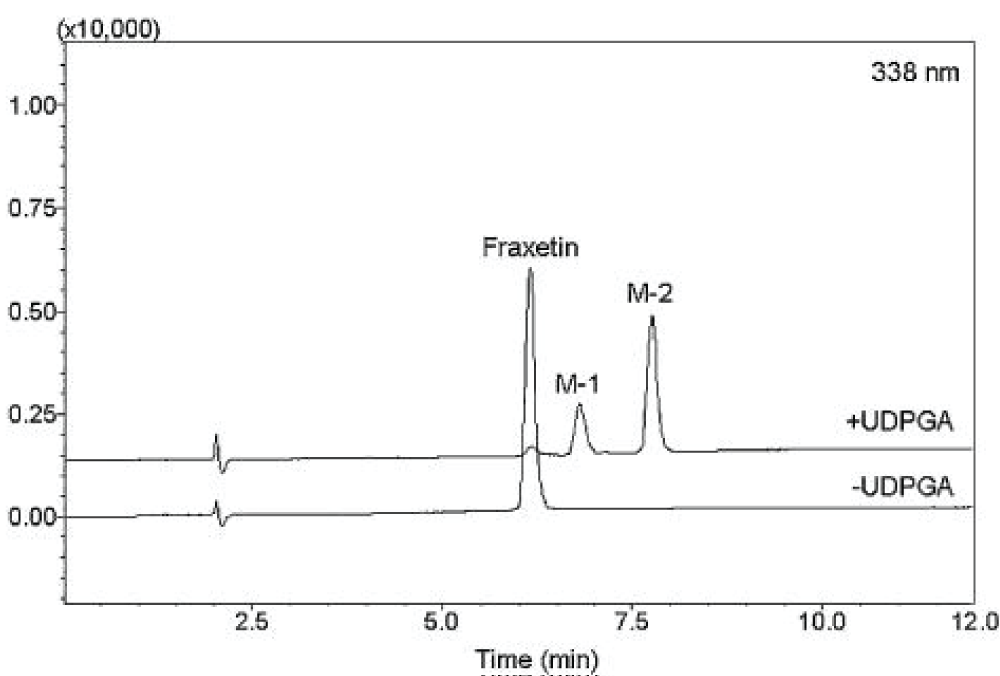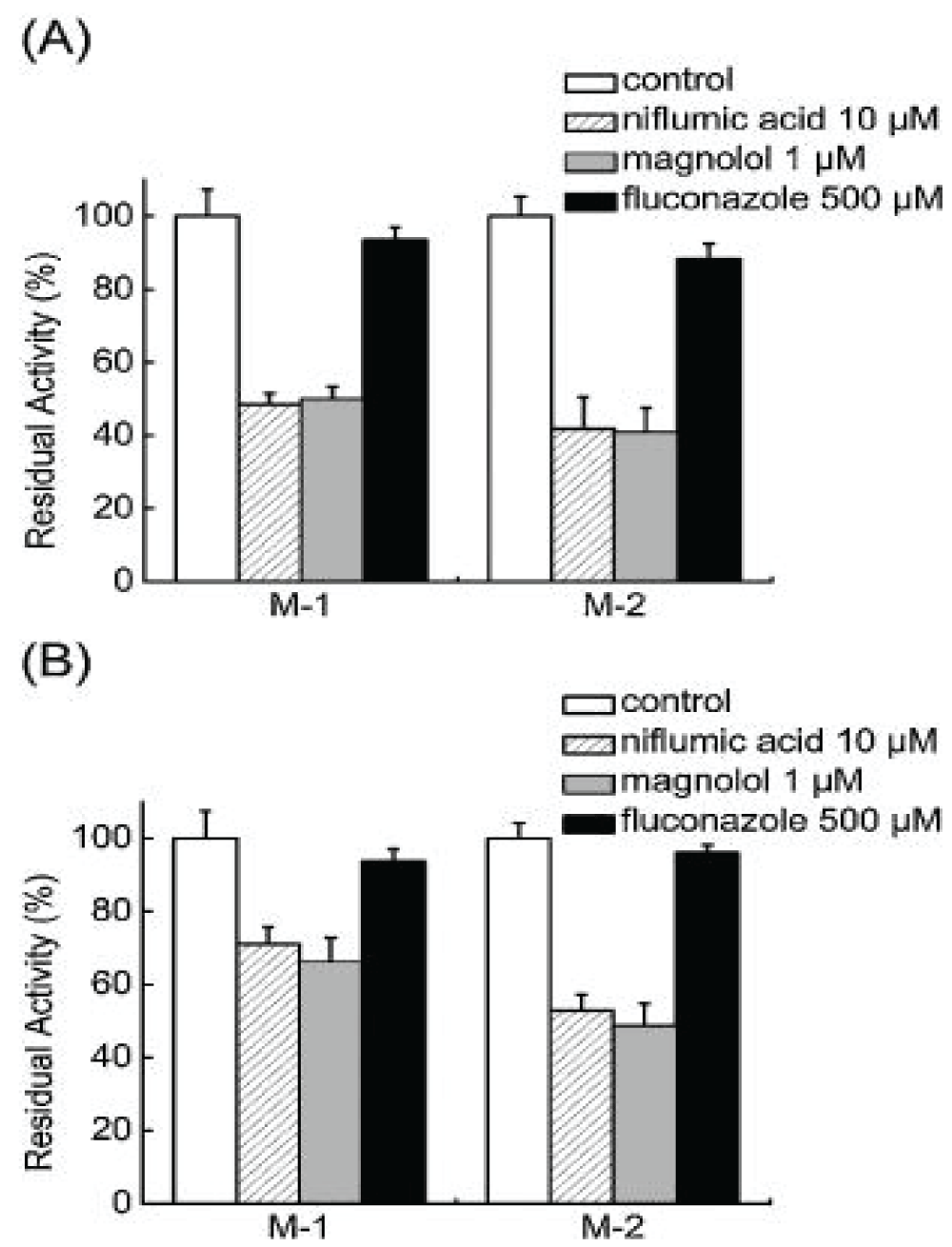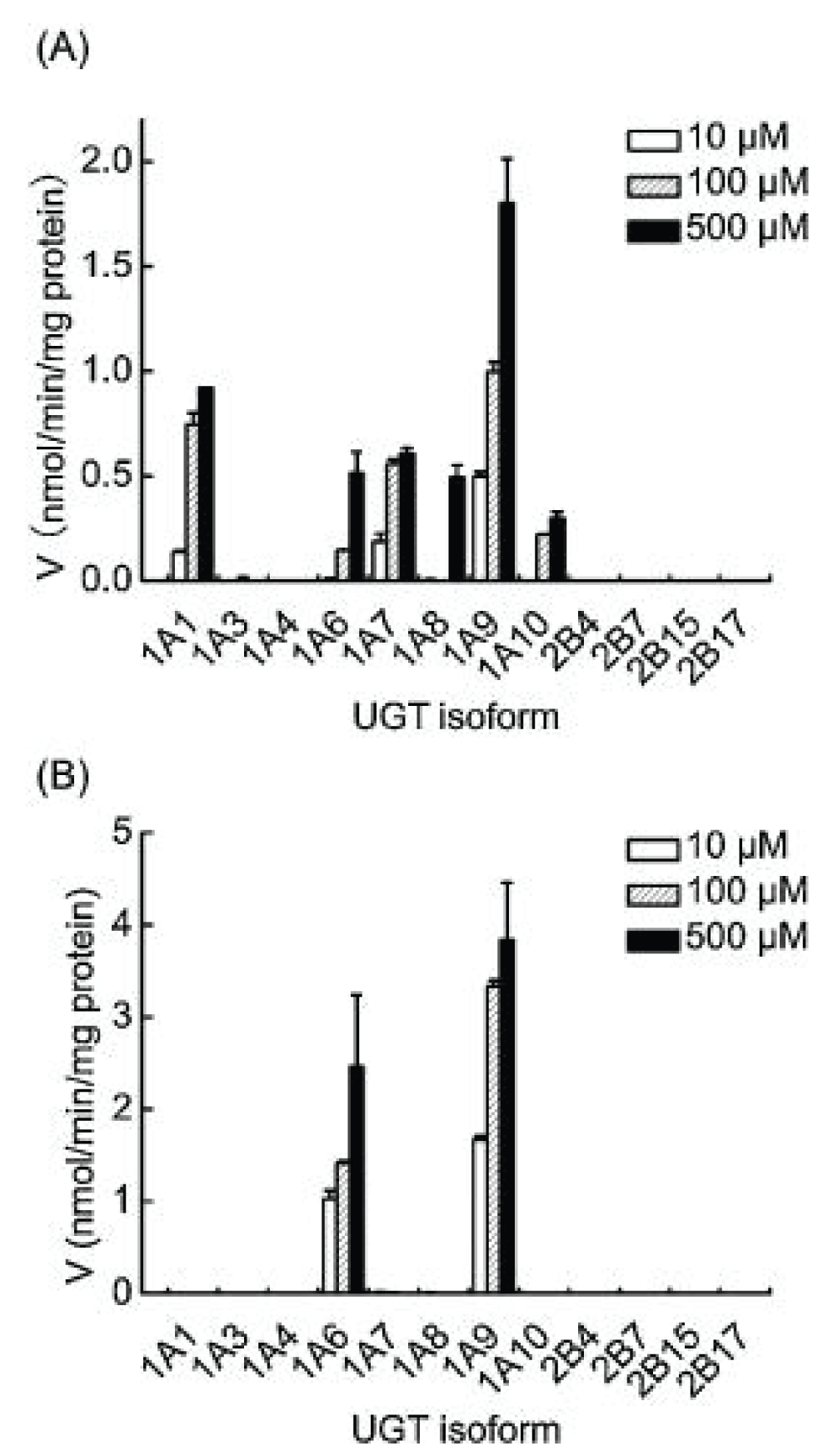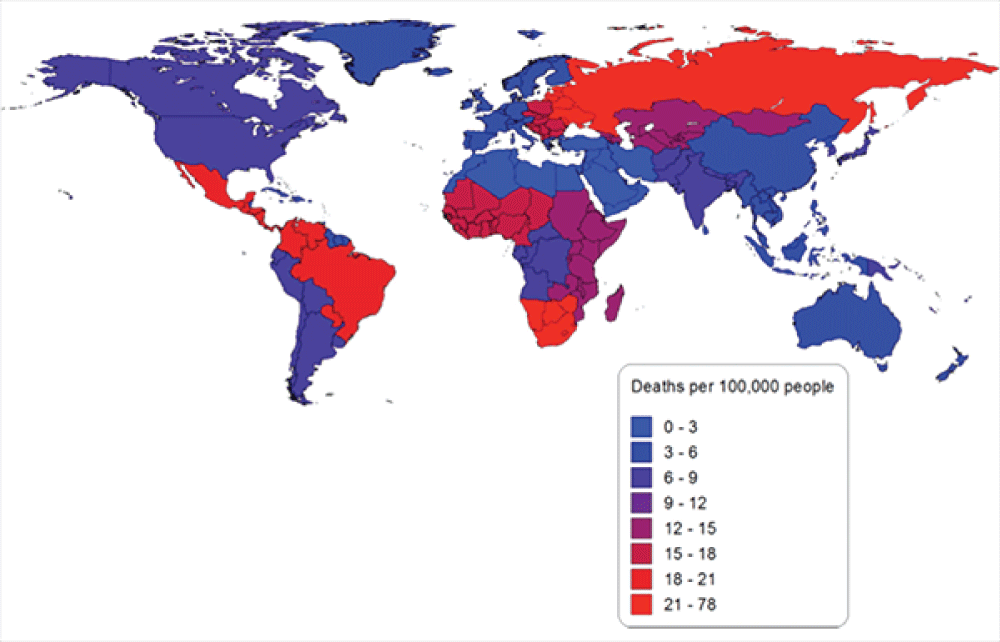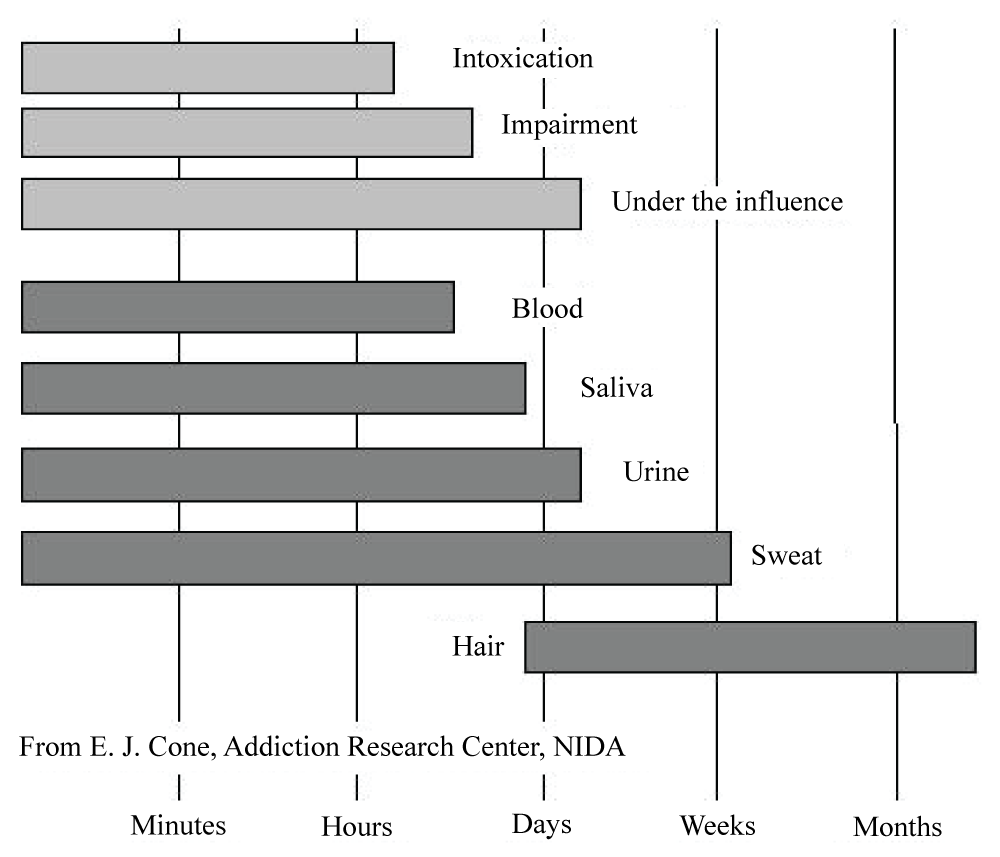More Information
Submitted: October 10, 2022 | Approved: October 27, 2022 | Published: October 28, 2022
How to cite this article: Nwakobi ME. Alcohol drinking and driving habit particularly in Nigeria and the role forensic science could play. J Forensic Sci Res. 2022; 6: 068-076.
DOI: 10.29328/journal.jfsr.1001038
Copyright License: © 2022 Nwakobi ME. This is an open access article distributed under the Creative Commons Attribution License, which permits unrestricted use, distribution, and reproduction in any medium, provided the original work is properly cited.
Keywords: Blood Alcohol Concentration (BAC); Alcohol Use Disorder (AUD); Drunk driving; Ethel Glucuronide (EtG); Fatty Acid Ethyl Esters (FAEE); Alcohol Dehydrogenase (ADH); Aldehyde Dehydrogenase (ALDH); Cytochrome P450 (CYP2E1); Microsomal Ethanol Oxidizing System (MEOS); Uridine; Diphosphate (UDP); Glucuronosyltransferases; Glucuronidation; Fraxrtin
Alcohol drinking and driving habit particularly in Nigeria and the role forensic science could play
Maurice E Nwakobi*
Department of Forensic Science, Faculty of Science, Admiralty University of Nigeria, Ibusa, Ogwashi-Uku Expressway, Delta State, Nigeria
*Address for Correspondence: Maurice E Nwakobi, Department of Forensic Science, Faculty of Science, Admiralty University of Nigeria, Ibusa, Ogwashi-Uku Expressway, Delta State, Nigeria, Email: [email protected]; [email protected]
Alcohol drinking habit is a serious epidemic that afflicts people worldwide regardless of socioeconomic class and the country’s development or civilization. The purpose of this systematic review was to summarize research findings on drinking and driving, its implications for Nigerian society, and the role forensic science can play in drunk driving. Nigeria, in particular has seen a lot of fatal accidents attributed to alcohol but due to a lack of forensic sobriety and toxicology drug tests at the crash scene that is not yet in place in the country, the offenders are not punished for this crime. The only two African countries that have legislation on Blood Alcohol Concentration (BAC) are South Africa and Zimbabwe. Nigeria has no such legislation and does not conduct such tests in injury and fatal accident cases. The prevalence of drinking habits among Nigerians and in particular the drivers cannot be ignored. This study examined global drinking habits including its prevalence in Nigeria and more importantly understudied the need for forensic science interplay in a criminal investigation against drunk driving in the country. Drunk driving in Nigeria is a serious problem. Establishing and enforcing drunken driving laws as a criminal offense would assist the country in the reduction of road accidents, injuries, and fatalities relating to road accidents. Forensic science is a unique field that is equipped with skills and knowledge that could be useful for criminal investigation in the country including accident cases. Forensic scientists have outstanding technical skills to identify, detect, and even assist the country’s prosecutors in the administration of justice in crime investigations. Nigeria as a country will be well served if forensic scientists work in partnership with the government. Drinking and driving in addition to other crimes has become a matter of concern. The country’s police force and courts still rely mostly on eyewitness circumstantial evidence, testimonies, and suspects’ confessions. Based on this, I personally believe that the advent of Forensic science in the country’s system will assist a great deal in solving crimes and reducing fatal accidents due to drunk driving.
Background
Alcohol drinking and other drug use while driving is a global threat and also a threat to Nigerian society. It is a well-known fact that alcohol affects visual performance and impairs judgment which increases the risk of an accident. In addition, it also affects drivers’ steadiness; and it is well documented in the US and other countries’ police departments during sobriety tests. However, that is not the case in Nigeria based on my research. As a result, many of these countries with documented alcohol drinking and driving have an established Blood Alcohol Concentration (BAC) legal limit for driving which does not exist in Nigeria and if it does, is not enforced based on this research. Even though the BAC limit varies in ranges in different states and countries; however, the variation is less than 1.00 BAC.
The legal limits for BAC in the various countries are as follows; United States, Canada, England, and Mexico have 0.8% as their limit: Sweden has 0.02%: and Israel, Korea, and Australia have 0.05%. In some of these countries, anything above the stated limit is considered drunk driving. A 0.08 BAC limit is equivalent to (three twelve-ounce cans of beer with a 4.5% of alcohol level). In the United States of America, a blood alcohol level of 0.200 – 0.249 is considered a dangerously high level. At this level, an individual may experience total mental confusion, nausea, vomiting, blackout, and even may need assistance in walking. When this individual takes over the wheel to drive, there is a high probability that a serious accident may occur. A BAC level of 0.250% - 0.399% is considered poisonous to the body and a loss of consciousness may occur. When the BAC reaches 0.40% or above, which could result in respiratory arrest, coma, or even death could occur [1,2]. In the above situation it is important for the individual to avoid driving for at least a period of 20 hours or above depending on the metabolic rate of the individual [3].
The study conducted by the Substance Abuse and Mental Health Services Administration [4], stated that close to 15 million people including 12 years old and above representing 5.3% of the US population have alcohol use disorder. In the United States like many other countries, deaths related to alcohol accidents are preventable. It is sad to note that drinking and driving is the third-leading cause of death compared to other deaths. Close to 90,000 people die every year in the United States due to drunken driving, overdose indulgence, and liver failure due to cirrhosis of the liver [5,6].
According to Li, et al. 34.1% of road accidents in the United States were attributed to alcohol. The survey by the National Highway Traffic Safety Administration [4] stated that 31% of motor vehicle accidents are related to alcohol-impaired driving which contributes to fetal traffic accidents in the USA. Drinking and driving are believed to be responsible for 10,000 deaths each year based on European Road Safety Action Program publication. All these studies have indicated that driving under the influence of alcohol exposes an individual to a high risk of having fatal or serious motor vehicle death/injuries [7].
Too much alcohol in the body places the liver under tremendous work to detoxify alcohol poisons well as other drugs. Even though after many years of drinking, an individual may develop tolerance to alcohol but does not stop the work of the liver in detoxification which could in the long run damage the liver. As a result, heavy and long-term drinkers who have developed tolerance can efficiently metabolize alcohol. However, having better alcohol tolerance does not equate to being a better driver. Alcohol side effect that includes lack of effective coordination fine motor skills, blurred vision, delayed motor skills; balancing problems, impaired judgment, and memory loss are still consequences of alcohol drinking. According to NIAAA [8] and KFL&A Public Health [9], 12 oz of beer contains the equivalent amount of 5% alcohol concentration. This is approximate, 5 fluid ounces of wine which is about 12% alcohol concentration. It is noted that 1.5 fluid ounces of distilled spirits are equal to 40% alcohol concentration as shown in Figure 1 [10].
Figure 1: United States standard drinks of beer, malt liquor, wine, and spirits compared. Approximated Alcohol Percentage: Contained in Various Drink Types. Source: National Institute on Alcohol Abuse and Alcoholism (NIAAA): The percent of pure alcohol expressed as alcohol by volume (Alc/vol.). It varies by beverage https://www.niaaa.nih.gov/what-standard-drink.
The organization of the literature review and search strategy included the topics on the demographic area. Source materials limited to the English language and when possible 2015 to date were obtained from the following databases. The author examined peer-reviewed articles related to drinking and driving, drunk driving, forensic epidemiology and toxicology of global drinking before driving including Nigeria.
Search topics include but are not limited to drinking and driving, drunk driving, drunk driving fatalities, alcohol facts and statistic, alcohol-impaired driving, alcohol forensic toxicology and Alcohol burden to society. Further searches include the National Institute on Alcohol Abuse and Alcoholism (NIAAA), National Survey on Drug Use and Health (NSDUH), World Health Organization (WHO), Center for Disease Control and Preventions (CDC), National Center for Statistics and Analysis, American Society of Addiction Medicine, Substance Abuse and Mental Health Services Administration (SAMHSA), Mothers Against Drunk Driving (MADD, Journal of forensic science, National Institute of Alcohol and Alcoholism. The study’s methodical effort was to link the significant role of Forensic science in curbing drinking and driving particularly in Nigeria.
Problem statement
Drinking and driving have a seriously damaging effect on the driver and on the community. Even though laws are in place in many countries, these laws do not completely deter drivers from drinking. However, many drivers knowing that there are serious consequences for drinking and driving seem to be mindful of alcohol drinking before driving. However, that is not the case in Nigeria where drinking and driving is a way of life and the BAC limit law is neither observed nor implemented. Statistics showed that deaths from alcohol-related accidents are very high compared to non-alcohol-related accidents. Nigeria has the worst reckless driving habits among all the countries the author has visited and driven in, that includes most European countries; most Asian countries; North and South America. Combining this recklessness with drinking and driving is disastrous to state it mildly.
Even in America where most drivers obey traffic laws and regulations still, auto accidents and deaths are still many due to drinking and driving. According to the National Highway Traffic Safety Administration (NHTSA) research and statistics (2017), 37,473 died in auto accidents as a result of drinking and driving or drunk driving. However, the more the BAC regulation is implemented, the lower the death rate for drinking and driving. The observed statistics report by the Substance Abuse and Mental Health Services Administration (2018), reported that only 36,560. A difference of 913 deaths compared to 2017 accidents due to drunk driving. An accident resulting from drinking and driving is not limited to the operator of the motor vehicle. The NHTSA report (2017) further states that 67% of all traffic deaths are motor vehicle occupants; 16% were pedestrians; 14% were motorcycle and pedal-cyclists, motorcycles, buses, and 13%. In Nigeria, there are no arrests or records and perhaps no existing law that regulates drinking and driving [11,12]. In addition, there are no data regarding fatalities as a result of drunk driving. Therefore, individuals can drink various combinations of alcohol as shown in Figure 1 and drive which is a very serious problem.
Each beverage shown in Figure 1 above represents one alcoholic drink equivalent or one standard drink. It is well known in the United States that any beverage containing 0.6 fl oz or 14 grams of pure alcohol is defined as one standard drink. Pure alcohol is expressed as alcohol by volume (alc/vol) and it varies within and across beverage types. It is important to note that this standard drink expression may not reflect customary serving sizes for health guidelines [8].
Apart from problems experienced by drivers who indulge in excessive and routine alcohol drinking, many years of alcohol usage may contribute to liver cirrhosis (a disease associated with years of repeated alcohol usage). Furthermore, these individuals may also experience alcoholic pneumonia which is another type of disease associated with years of repeated drinking. Cubing alcohol use and drunk driving in Nigeria will need the services of forensic scientists to be teamed up with the police and judicial system.
Forensic scientists are equipped to assist the federal government of Nigeria in combating this problem of drinking and driving in addition to other illicit drugs. Developed countries such as the United States and many other European and Asian countries; use field sobriety tests to determine if the individual has been drinking before taking to the wheels. Forensic toxicology tests including a breathalyzer, blood tests, urine tests, hair tests, and finger/toenail tests can determine if a driver is under the influence of alcohol or drugs.
Alcohol and other drugs’ durations in the body are limited; therefore, it is essential for a certified forensic toxicologist to perform the tests as soon as the driver is pulled over. Alcohol in particular can last from 1 hour to 72 hours depending on the amount consumed. Based on my knowledge as a clinical laboratory scientist; people with higher tolerance to alcohol may metabolize alcohol quicker than leisure drinkers. In addition, the detection of alcohol and other drugs depends on the test performed. Individuals with alcohol-use disorders; have alcohol dictated in their urines 3 days after consumption had stopped. Furthermore, if an individual has an alcohol level that is twenty percent, twice the legal limit for drunk driving at the time the person had stopped consumption, it will take over thirteen hours to reach zero level if a breath alcohol test was administered. The oxidative product of alcohol metabolism is acetaldehyde which is in turn metabolized to acetate. Both acetaldehyde and acetate are produced to contribute to cells, tissues, and organ damage that are noticeable in many ways.
It is important to note that the accuracy and determination of alcohol level are dependent on the specimen ordered and the methodology used in forensic toxicology sample test performance as explained below.
Forensic toxicology for alcohol tests using various specimens
Urine alcohol tests: Urine alcohol can be detected in the system between 12 and 72 hours. Ethel Glucuronide (EtG) is the precise metabolite released in urine by the body through the process of glucuronidation that reveals alcohol consumption within the last 12 to 72 hours regardless of the amount of drink.
Alcohol hair test: The alcohol hair test is mostly performed to determine addiction; especially for routine alcohol drinkers for an extended period of time. Like urine alcohol tests, alcohol hair test works through the process of EtG metabolites biomarkers as well as FAEE (Fatty Acid Ethyl Esters) biomarkers present in the hair. The hair test is the most accurate method of testing alcohol and other drugs and can be detected for up to 12 weeks Figures 2,3.
Figure 2: Ethel Glucuronide (EtG): Is Alcohol Metabolic Biomarker: Chemical Formula and Structure.
Figure 3: Fatty Acid Ethyl Ester (FAEE) Metabolic Biomarker: Chemical formula and structure
Structure
Fatty Acid Ethyl Ester (FAEE): is the enzyme-mediated metabolic process of fatty acyl-coenzyme A; in the esterification of ethanol. This process usually occurs pancreas and liver and is observed mostly in ethanol abuse patients and could be seriously damaged the liver and/or pancreas.
Alcohol Breathalyzer test: The alcohol breathalyzer test measures the blood amount of alcohol in BAC exhaled during the breathing process in a person. The breathalyzer device is used because the level of a person’s alcohol blood content decreases every hour. For example, the BAC limit of 0.05 alcohol level after an hour will be lowered to 0.04 approximately. For the system to completely eliminate it through metabolic processes from the body, it will take approximately 3 hours and 25 minutes.
Blood Alcohol test: Unlike the breathalyzer test, the blood alcohol test shows a reduction of alcohol from the blood at approximately 0.02 per hour. Blood alcohol levels can be detected in a blood test for up to 12 hours. Originally, the blood alcohol test was the order of the day in determining the alcohol content of the body. However, with the advent of other test specimens, blood tests are not often ordered because of their invasive nature.
Alcohol Fingernail test: Fingernail or toenail testing for alcohol even goes further than a hair test because it gives the history of a person’s alcohol use for a particular time period; between three to six months. Beta keratin fiber which is a fingernail/toenail biomarker is found on the entire length of the nails and helps to detect alcohol and other drugs of abuse.
Alcohol Saliva test: Alcohol saliva tests are capable of detecting alcohol 2 hours after a drink of alcohol. This test is similar to urine alcohol and breathalyzer tests in the sense that it can detect 12 to 24 hours after the person had stopped consumption even though there are many factors that influence alcohol metabolism. [13,18].
One of the end products of alcohol glucuronidation is Ethel glucuronide (ETG). This substance is water-soluble and allows the elimination of toxic alcohol to be removed from the body through urine or feces after it is processed in the liver via bile. The liver enzyme cells known as alcohol dehydrogenase (ADH) are responsible for breaking down alcohol into acetaldehyde. Following the first step, another enzyme called aldehyde dehydrogenase (ALDH) breaks down acetaldehyde into acetate. The enzymes that are involved in converting alcohol to acetaldehyde include alcohol dehydrogenase (ADH) which is responsible for removing hydrogen atoms from alcohol; cytochrome P450 (CYP2E1) enzyme bonds the released hydrogen to oxygen and NADPH to form water and NADP+. However, if this takes place inside the microsomal cells, it is referred to as Microsomal Ethanol Oxidizing System (MEOS). The third enzyme referred to as catalase, metabolizes alcohol into acetaldehyde and the released hydrogen is in turn bonded to hydrogen peroxide molecules to form water Figure 4.
Figure 4: Aromatic Hydroxy (Arenolic) Metabolites resulting from the oxidative (O-) dealkylationof Aralkoxy groups;univalent radical composed of an aralkyl group united with one atom of oxygen. Souces: Babiker et al. 2018
The metabolism of alcohol compounds is in two steps. Step one is the biotransformation reactions via oxidation and hydrolysis reactions. In step two, the conjugate molecule (glucuronide) with the product in step one produces a more water-soluble molecule excreted in form of urine as shown in Figure 5.
Figure 5: AEthyl Alcohol is converted into Acetaldehyde and two hydrogen atoms.
Alcohol dehydrogenase (ALDH) of varying types is the alcohol enzyme responsible for breaking down the alcohol consumed by an individual. However, some of these ALDHs are more efficient in breaking down alcohol than others in the human body. When an alcoholic beverage is consumed, between 2% to 8% is lost through urine, sweat, and breath. The remaining 92% to 98% is metabolized by your body.
As diagramed in Figure 5, the ethyl alcohol in humans is converted to acetaldehyde and two hydrogen atoms. Acetaldehyde: a poisonous substance and close relative of formaldehyde which is further converted to acetyl radicals (acetic acid radicals) essential component of vinegar. The acetic acid radical in the Krebs cycle combines with Co-enzyme A to form acetyl-CoA which is helpful in broking down carbon dioxide and water in the human body.
Fraxetin is another compound that enhances alcohol dehydrogenase (ADH) and aldehyde dehydrogenase (ALDH) activities. Fraxetin has an antioxidant ability to metabolize alcohol and in addition, has an anti-inflammation effect that alleviates alcohol inflammation Figure 6.
Figure 6: Fraxetin Formula and Structure.
Fraxetin is an antioxidant from alcohol (phenol) used to protect against rotenone and is an inhibitor of the mitochondrial electron transport chain complex I in neuroblastoma cells Figures 7,8 and Table 1.
Figure 7: Fraxetinanti oxidant activity is induced by alcohol. It can be produced naturally in human body and also can be artificially manufactured as a synthetic coumarin derivative with anti-inflammatory effect. ResearchGate.net: Glucuronidation pathway with Fraxetin as an antioxidant is use to protect against rotenone an inhibitor of electron transport chain complex I in neuroblastoma cells of the mitochondria.
Figure 8: The sketch of the picks of Fraxetin, M1, and M2 using High Performance. Liquid Chromatography in Ultraviolet (HPLC-UV) media. ResearchGate.net: Representative HPLC-UV profile of fraxetin and its glucuronides in HLM
| Table 1: | ||||||
| UGT Source | M-1 | M-2 | ||||
| Vmax | Km | Vmax/KM | Vmax | KM | VMAX/KM | |
| HLM | 29.3 ± 0.6 | 309.4 ± 19.7 | 94 | 28.8 ± 0.3 | 60.0 ± 2.4 | 480 |
| HGT1A1 | 2.5 ± 0.1 | 85.2 ± 5.7 | 29 | |||
| UGT1A6 | 2.4 ± 0.1 | 40.1 ± 208 | 59 | |||
| UGT1A7 | 2.1 ± 0.1 | 79.6 ± 7.7 | 26 | |||
| UGT1A9 | 2.2 ± 0.2 | 52.3 ± 9.0 | 42 | 3.7 ± 0.1 | 12.3 ± 1.4 | 300 |
| Vmax: nmol/min/mg; km: µm; vmax/km: µ1/min/mg | ||||||
| Source: ResearchGate.net: Human Uridine diphosphate UDP lucuronosyl transfer-ases that are responsible for the Glucuronidation of Fraxetin(Identification and Characterization). | ||||||
Factors that could influence alcohol metabolism
Age of the individual: The effect of alcohol increases with age. The older a person gets the slower the rate of metabolic processing of alcohol and the higher the BAC level compared to younger individuals.
Weight of the individual: An individual’s weight can also determine the metabolism of alcohol. The heavier a person is, the more water is retained in the body for a healthy person. The retention of water dilutes alcohol thereby lowering the BAC level.
Gender of the person: Gender plays an important role at the BAC level. The female gender retains more alcohol in the blood than its male counterpart even when their weights are exactly the same and the same amount of alcohol was consumed. This is attributed to the fact that females retain less water in the body than males and also they have fewer enzymes that metabolize alcohol when compared to males.
Food intake before and during alcohol consumption: Drinking alcohol on an empty stomach could quickly increase the BAC level compared to drinking while or after eating which has less severe consequences.
The blood alcohol concentration calculation formulated
by Erick Widmark is based on weight, gender, and distribution factors. His formula for calculating blood alcohol concentration, BAC = M (mass in kilogram) x C {blood alcohol concentration in g/100 ml(g/100g) x 10} x F (gender distribution factor for men 3.75 and for women by 4.7) {0.73 for men and 0.66 for women}. The formula is then as follows: {BAC = M x C x F}.
For example, a man with 80 kg mass with a blood alcohol level of 0.08 g/100 ml, would be calculated as follows:
BAC = M x C x F
= 80 x (0.08 x 10/1.056) x 0.73
= 42.24g (0.42%).
Consequences of drinking and driving
Drinking and driving are major factors that contribute to injuries and deaths around the world including in Nigeria. It has been proven in many studies that the higher a person’s BAC level, the more likely the person would be involved in an accident. Alcohol affects an individual’s judgment and decision-making. It can also play a significant role in clouding judgment and reflexes. In addition, it slows down the reaction person’s ability to coordinate effectively while driving; perhaps, due to a decreased vision which increases the likelihood of an accident. In the United States and other developed countries, driving while under the influence (DUI) of alcohol can lead to license suspension, jail time, fines, and fees if convicted of a DUI offense. If convicted, could increase the driver’s insurance rate and it may even result in loss of employment.
Alcohol burden on individuals and the society
According to The National Institute of Health (NIH) (2006); on Alcohol Abuse and Alcoholism, about three million people die every due to alcohol abuse in the United States. This number represents 5.3% of all deaths. In addition to the deaths, diseases associated with alcohol such as liver cirrhosis can also lead to debilitative conditions or even death. The study also noted that 5.1% of the world’s burden of disease is a result of alcohol consumption. The judgment of a person who has consumed alcohol is very poor therefore are likely to have unprotected sex and may contract diseases such as HIV/AIDS, tuberculosis, and other communicable diseases that are a huge cost to the person and the society. The alcohol economic cost to Nigeria in terms of consumption is not different from other nations. The health care costs, property damage costs, loss of productive work hours, and alcohol-related crimes costs that include rapes could be effectively managed if alcohol control measures are in place and enforced. Bouchery, E.; Simon, C.; and Harwood, H [14] analysis estimated that all the above costs relating to economic burdens in the United are $223.5 billion dollars ($746 per person in the USA) and by the year 2010, the burden had increased to $249.0 billion [15].
Lost productivity is estimated at 72.2% of this cost, Health care costs 11.0% of the cost, criminal justice costs are 9.4% and miscellaneous costs are estimated at 7.5%. The United States is not even among the countries that have more deaths per hundred thousand people in relation to alcohol as shown in Figure 9. An estimated 88,000people (approximately 62,000 men and 26,000 women5) die from alcohol-related causes annually, making alcohol the third leading preventable cause of death in the United States. The first is tobacco, and the second is poor diet and physical inactivity [16]. In 2014, alcohol-impaired driving fatalities accounted for 9,967 deaths (31 percent of overall driving fatalities) [17]. It was estimated that 3.3 million deaths equivalent to 5.9% of all deaths worldwide were attributed to alcohol and the ratio of women to men deaths were approximately 1:2. [1]. The World Health Organization (WHO) report of 2014 stated that human diseases and injury-related health conditions from alcohol drinking were over two hundred in numbers. The diseases included liver cirrhosis, cancers, injuries, and 139 million disability-adjusted life-years attributed to alcohol drinking [2,18].
Figure 9: The graph shows the formation of the two metabolites, M-1 (A) and M-2 (B) achieved by the means of duplicate incubations.
According to 2018 the National Center for Statistics and analysis, motor vehicle traffic accident fatalities were 10,511 and a driver involved had a BAC of at least 0.08 g/dL or higher for a total of 29% of all traffic fatalities for the year. They estimated an average of 1 alcohol-impaired-driving fatality occurred every 50 minutes in 2018 as shown in the table below. In their analysis, alcohol-impaired-driving traffic accident fatalities among children 14 or younger was 22% while those between the ages of 21 and 24 were 27% who had a BAC of 0.08 g/dl or higher. Among the 10,511 alcohol-impaired driving fatalities mentioned above, 67% is equivalent to 7,051 people who were in an accident where at least one driver had a BAC level of 0.15 g/dL or higher [12] Table 2.
| Table 2: Fatalities, by Role, in Crashes Involving at Least One Alcohol-Impaired Driver, 2018. | ||
| Role | Number | Percent |
| Alcohol-Impaired Drivers | 6,364 | 61% |
| Passengers Riding With Alcohol-Impaired Drivers | 1,389 | 13% |
| Subtotal | 7,753 | 74% |
| Occupants of Other Vehicles | 1,580 | 15% |
| Non-occupants (pedestrians/pedal-cyclists/other) | 1,178 | 11% |
| Total Alcohol-Impaired- Driving Fatalities | 10,511 | 100% |
It is a well-known fact that alcohol metabolism begins almost immediately; therefore, most physicians and police officers rely on patient/suspect observation and the use of a breathalyzer to access intoxication and alcohol present in the person.
The Zador, et al. [19] study noted that the likelihood of an involvement fatal accident was increased 9 times when the BACs of 0.05 to 0.09% involved as demonstrated in Table 3. For every increase of 0.02% alcohol BAC, the fatal crash risk was increased for drivers that were under age 21 as well as female drivers.
In Table 3, male drivers between the ages of 16 and 20 with a BAC of 0.8% have 52 times greater risk of an accident compared to the same age group with a 0.0% BAC percentage Table 4.
| Table 3: Indicates the chances of being killed in a single-vehicle crash are increased by age, gender, and BAC range. | ||||||
| Driver's | ||||||
| blood alcohol concentration (BAC) ranges: |
Males | Females | ||||
| Ages 16–20 | 21–34 | 35+ | 16–20 | 21–34 | 35+ | |
| 0.02–0.049 | 5 | 3 | 3 | 3 | 3 | 3 |
| 0.05–0.079 | 17 | 7 | 6 | 7 | 7 | 6 |
| 0.08–0.099 | 52 | 13 | 11 | 15 | 13 | 11 |
| 0.10–0.149 | 241 | 37 | 29 | 43 | 37 | 29 |
| 0.15+ | 15,560 | 572 | 382 | 738 | 572 | 382 |
Source: [19]. |
||||||
| Table 4: Traffic Deaths by Age and BAC level in the United States. | |||||||
| Age | <16 | 16-20 | 21-29 | 30-45 | 46-64 | 65+ | Unknown |
| BAC = 0.00% | 77% | 63% | 43% | 47% | 62% | 85% | 51% |
| BAC = 0.01-0.07% | 5% | 7% | 7% | 6% | 5% | 3% | 5% |
| BAC = 0.08-0.14% | 7% | 13% | 16% | 13% | 9% | 5% | 16% |
| BAC = 0.15% + | 11% | 17% | 34% | 35% | 24% | 7% | 29% |
| Percentage of Alcohol Involved |
23 | 37 | 57 | 53 | 38 | 15 | 49 |
| Number of Alcohol Involved |
573 | 2,329 | 4,595 | 5,682 | 3,192 | 971 | 78 |
| Total Fertilities | 2,542 | 6,277 | 8,022 | 10,707 | 8,487 | 6,622 | 158 |
| Source: Zador, et al. 2000 | |||||||
Based on the Table 5, the relative risk of a driver whose BAC level is 0.8 being killed is thirteen times compared to a driver whose BAC level is 0.0 for drivers between the ages 21 to 34. Furthermore, with every increase in BAC level of E 0.02%, the chances of a driver being increased and the risk of fatal injury in a single-vehicle crash among male drivers between ages 16-20 is doubled compared to female drivers Table 6 [20].
| Table 5: The Frequency (N) and percent distribution (%) of driver fatalities in single-vehicle crashes by sex, age, and BAC in the 48 contiguous states during weekend nights. Data from FARS; years 95-96. | |||||||||
| BAC | |||||||||
| 000 001-019 020-049 050-079 | |||||||||
| Sex | Age | N | % | N | % | N | % | N | % |
| Male | 16-20 | 113 | 4.4 | 3 | 0.1 | 21 | 0.8 | 27 | 1.1 |
| 21-34 | 124 | 4.9 | 1 | 0.0 | 15 | 0.6 | 41 | 1.6 | |
| 35-97 | 111 | 4.3 | 0 | 0.0 | 11 | 0.4 | 16 | 0.6 | |
| All | 348 | 13.6 | 4 | 0.2 | 47 | 1.8 | 84 | 3’3 | |
| Female | 16-20 | 51 | 2.0 | 3 | 0.1 | 4 | 0.2 | 6 | 0.2 |
| 21-34 | 33 | 1.3 | 0 | 0.0 | 2 | 0.1 | 11 | 0.4 | |
| 35-97 | 22 | 0.9 | 0 | 0.0 | 3 | 0.1 | 4 | 0.2 | |
| All | 106 | 4.2 | 3 | 0.1 | 9 | 0.4 | 21 | 0.8 | |
| All | 16-20 | 164 | 6.4 | 6 | 0.2 | 25 | 1.0 | 33 | 1.3 |
| 21-34 | 157 | 6.2 | 1 | 0.0 | 17 | 0.7 | 52 | 2.0 | |
| 35-97 | 133 | 5.2 | 0 | 0.0 | 14 | 0.5 | 20 | 0.8 | |
| All | 454 | 17.8 | 7 | 0.3 | 56 | 2.2 | 105 | 4.1 | |
| 080-099 100-149 150+ Total | |||||||||
| Sex | Age | N | % | N | % | N | % | N | % |
| Male | 16-20 | 26 | 1.0 | 89 | 3.5 | 156 | 6.1 | 435 | 17.0 |
| 21-34 | 41 | 1.6 | 200 | 7.8 | 619 | 24.3 | 1,041 | 40.8 | |
| 35-97 | 17 | 0.7 | 84 | 3.3 | 420 | 16.5 | 659 | 25.8 | |
| All | 84 | 3.3 | 373 | 14.6 | 1,195 | 46.8 | 2,135 | 83.7 | |
| Female | 16-20 | 2 | 0.1 | 11 | 0.4 | 15 | 0.6 | 92 | 3.6 |
| 21-34 | 10 | 0.4 | 36 | 1.4 | 99 | 3.9 | 191 | 7.5 | |
| 35-97 | 6 | 0.2 | 15 | 0.6 | 84 | 3.3 | 134 | 5.3 | |
| All | 18 | 0.7 | 62 | 2.4 | 198 | 7.8 | 417 | 16.3 | |
| All | 16-20 | 28 | 1.1 | 100 | 3.9 | 171 | 6.7 | 527 | 20.7 |
| 21-34 | 51 | 2.0 | 236 | 9.2 | 718 | 28.1 | 1,232 | 483 | |
| 35-97 | 23 | 0.9 | 99 | 3.9 | 504 | 19.7 | 793 | 31.1 | |
| All | 102 | 4.0 | 435 | 17.0 | 1,393 | 54.6 | 2,552 | 100..0 | |
| Table 6: Traffic Alcohol Impaired Crash Fatalities: 1985 through 2018. U.S. Department of Transportation: National Highway Traffic Safety Administration. | |||
| Alcohol-Impaired | Crash Fatalities | ||
| Year | Total Traffic Fatalities | Number | Percentage of All Crash Deaths |
| 1985 | 43,825 | 18,125 | 41 |
| 1990 | 44,599 | 17,705 | 40 |
| 1995 | 41,817 | 13,478 | 32 |
| 2000 | 41,945 | 13,324 | 32 |
| 2005 | 43,510 | 13,582 | 31 |
| 2006 | 42,708 | 13491 | 32 |
| 2007 | 41,259 | 13,041 | 32 |
| 2008 | 37,423 | 11,711 | 31 |
| 2009 | 33,883 | 10,759 | 32 |
| 2010 | 32,999 | 10,136 | 31 |
| 2011 | 32,479 | 9,865 | 30 |
| 2012 | 33,782 | 10,336 | 31 |
| 2013 | 32,894 | 10,110 | 31 |
| 2014 | 32,744 | 9,943 | 30 |
| 2015 | 35,485 | 10,320 | 30 |
| 2016 | 37,806 | 10,996 | 29 |
| 2017 | 37,473 | 10,908 | 29 |
| 2018 | 36,560 | 10,511 | 29 |
| Source: U.S. Department of Transportation, National Highway Traffic Safety Administration. | |||
Alcohol-impaired driving crashes are crashes that involve at least one driver or a motorcycle operator with a blood alcohol concentration (BAC) of 0.08 grams per deciliter or above, the legal definition of alcohol-impaired driving in most states.
Alcohol consumption has a long-lasting effect on individuals and society as a whole. Reducing the Impact of alcohol on society including accidents and diseases associated with alcohol is a big challenge worldwide: Nigeria included. As has been detailed in the studies, alcohol has an unquestionable impact on driving as well as health problems globally; Nigeria included. The author believes that forensic science crime investigations would be a welcome addition to Nigerian law enforcement agencies and the country’s court systems.
The application and awareness of forensic science as a growing field in developing countries including Nigeria is essential to civil society and liberty. Alcohol consumption in Nigeria is considered by many adults and youths alike as a way of life. In addition, the country has no government enforceable policies regarding drinking and driving that are obvious. The government needs to enact policies and laws against alcohol sales to minors especially those below the age of 17 years in accordance with the country’s “criminal-procedure act of 2004” that stipulates 17 years old and under as being minor. In this study, it has been demonstrated that alcohol contributes to deadly traffic accidents and injuries. In addition, could contribute to illnesses including liver cirrhosis and others.
In conclusion, if blood alcohol concentration is monitored in Nigeria by law enforcement agencies, it will invariably reduce deaths and injuries associated with drinking and driving. Most developed countries have employed limits on alcohol before taking over the wheels of driving. In Table 2 (2018) crashes involving at least one alcohol-impaired driver showed that 61% out of 100% of the total crashes for that year involved alcohol. Based on Figures 10-12, the average death per 100,000 people in Nigeria as a result of drinking and driving is between 12 and 15 deaths for every 100,000 people in the country and it is the 4th largest death in the world attributed to alcohol. In the USA and perhaps in Nigeria too, the chances of male drivers between the ages of 16 and 20 with a BAC of 0.8% have 52 times greater risk of an accident compared to the same age group with 0.0% BAC percentage supporting the argument that monitoring drinking and driving in Nigeria is very essential and need to be implemented.
Figure 10: The graph below is the inhibitory effects of niflumic acid, magonolol, and fluconazole on the formation of fraxetin-glucuronidated metabolites M-1 (A) and M-2 (B.)
Figure 11: Alcohol related Global Deaths per 100,000 people.
Figure 12: Different sample of alcohol presented for tests and how long it can be detected after use for samples including Urine, Blood, Saliva, ETG, fingernail, and Hair Follicle Screens.
This study/write-up hopes that the Nigerian government will not only reform the law but also enforce it with the assistance of forensic scientists working with law enforcement and the court system to lessen the burden as well as deal with the legal ramification of drinking and driving. Driving on its own requires a lot of concentration and paying attention to details on the road.
Drinking as has been clearly demonstrated in this research reduces concentration, hampers attention to road details, impairs judgment, and crowns all the feel of invisibility by drivers who are under the influence. For these reasons, the Nigerian government should solicit the advice of forensic scientist at the Admiral University of Nigeria who is capable of assisting law enforcement personnel in evidence processing and prosecution of the offenders in the criminal justice system.
- Researchgate.net;https://www.researchgate.net/figure/Mechanism-of-the-glucuronidation-reaction-catalyzed-by-UDP- glucuronosyltransferases_fig1_268228784.
- World Health Organization (WHO). Global Status Report on Alcohol and Health. XIV. 2014 ed. http://www.who.int/substance_abuse/publications/global_alcohol_report/msb_gsr_2014_1.pdf?ua=1. Accessed 1/18/17.
- Center for Substance Abuse Treatment. Substance Abuse: Clinical Issues in Intensive Outpatient Treatment. Rockville (MD): Substance Abuse and Mental Health Services Administration (US); 2006. Report No.: (SMA) 06-4182. PMID: 22514853.
- Substance Abuse and Mental Health Services Administration. Key Substance Use and MentalHealth Indicators in the United States: Results from the 2017 National Survey on Drug Use and Health. 2018.
- Centers for Disease Control and Prevention (CDC). Alcohol and Public Health: Alcohol-Related Disease Impact (ARDI). Average for United States 2006–2010 Alcohol-Attributable Deaths Due to Excessive Alcohol Use. https://nccd.cdc.gov/DPH_ARDI/Default/Report.aspx?T=AAM&P=f6d7eda7-036e-4553-9968-9b17ffad620e&R=d7a9b303-48e9-4440-bf47-070a4827e1fd&M=8E1C5233-5640-4EE8-9247-1ECA7DA325B9&F=&D=.Accessed 1/18/17.
- Mokdad AH, Marks JS, Stroup DF, Gerberding JL. Actual causes of death in the United States 2000. [Published erratum in: JAMA 293(3):293–294, 298] JAMA: Journal of the American Medical Association. 2004; 291(10):1238–1245,.PMID: 15010446.
- United States. National Highway Traffic Safety Administration (NHTSA); Relative Risk of Fatal Crash Involvement by BAC, Age, and Gender; 2000. DOT- HS-809-050; NTIS-PB2000105419.
- National Institute on Alcohol Abuse and Alcoholism: RETHINKING DRINKING Alcohol and your health - What's a "standard" drink? https://www.rethinkingdrinking.niaaa.nih.gov/How-much-is-too-much/What-counts-as-a-drink/Whats-A-Standard-Drink.aspx 2020.
- KFL&A public Health: What Is A Standard Drink?:https://www.kflaph.ca/en/healthy-living/What-is-a-Standard-Drink.aspx 2019
- National Institute on Alcohol Abuse and Alcoholism (NIAAA): What Is A Standard Drink? https://www.niaaa.nih.gov/what-standard-drink.
- National Center for Statistics and Analysis. 2014 Crash Data Key Findings (Traffic Safety Facts Crash Stats. Report No. DOT HS 812 219). Washington, DC: National Highway Traffic Safety Administration, 2015. https://crashstats.nhtsa.dot.gov/Api/Public/ViewPublication/812219. Accessed 9/19/16.8.
- National Center for Statistics and Analysis. (2019, December). Alcohol-impaired driving: 2018 data (Traffic Safety Facts. Report No. DOT HS 812 864). Washington, DC: National Highway Traffic Safety Administration.
- American Society of Addiction Medicine. Drug Testing: A White Paper of the American Society of Addiction Medicine. 2013.
- Bouchery E, Simon C, Harwood H. Economic Costs of Excessive Alcohol Consumption in the United States, the Lewin Group, 2010. Available at: http://www.lewin.com/publications/Publication/451/. Accessed 2006; May 14, 2012.
- Sacks JJ, Gonzales KR, Bouchery EE, Tomedi LE, Brewer RD. 2010 National and State Costs of Excessive Alcohol Consumption. Am J Prev Med. 2015 Nov;49(5):e73-e79. doi: 10.1016/j.amepre.2015.05.031. Epub 2015 Oct 1. PMID: 26477807.
- World Health Organization (WHO). Alcohol. Available at: http://www.who.int/mediacentre/factsheets/fs349/en/#. Accessed 2015; 9/19/16.
- Giesbertz P, Pico A, Hanspers K, Slenter D. Glucuronidation (Homo sapiens) https://www.wikipathways.org/index.php/Pathway:WP698#nogo2. 2019
- World Health Organization (WHO). Global Status Report on Alcohol and Health. 57. 2014. http://www.who.int/substance_abuse/publications/global_alcohol_report/msb_gsr_2014_1.pdf?ua=1. Accessed 6/15/17.
- Paul Z, Krawchuk SA, Robert BV, Relative risk of fatal crash involvement by BAC, age, and gender.National Institute on Alcohol Abuse and Alcoholism (NIAAA): Alcohol Alert Number 87 2014;https://pubs.niaaa.nih.gov/publications/aa87/aa87.htm.
- National Institute on Alcohol Abuse and Alcoholism (NIAAA): Alcohol Alert Number 87 2014https://pubs.niaaa.nih.gov/publications/aa87/aa87.htm.
- El-Haj BM, Ahmed SBM, Garawi MA, Ali HS. Linking Aromatic Hydroxy Metabolic Functionalization of Drug Molecules to Structure and Pharmacologic Activity. Molecules. 2018 Aug 23;23(9):2119. doi: 10.3390/molecules23092119. PMID: 30142909; PMCID: PMC6225321.
- Rehm J, Shield KD. Global alcohol-attributable deaths from cancer, liver cirrhosis, and injury in 2010. Alcohol Res. 2013;35(2):174-83. PMID: 24881325; PMCID: PMC3908708.
- Researchgate.net; https://www.google.com/search?q=o-dealkylation+of+methyl+ether+research+researchgate&tbm=isch&source=iu&ict x=1&fir=IAVbKiJOX4wH7M%253A%252C01RVqZzs1V_OTM%252C_&vet= 1&usg=AI4_- kQMTmyTEAY6T7I682Gf_DYGhlsRqA&sa=X&ved=2ahUKEwiasp3h- tPpAhV0wuYKHXHtDRAQ9QEwBnoECAEQBA#imgrc=IAVbKiJOX4wH7M:
- Shield KD, Parry C, Rehm J. Chronic diseases and conditions related to alcohol use. Alcohol Res. 2013;35(2):155-73. PMID: 24881324; PMCID: PMC3908707.
